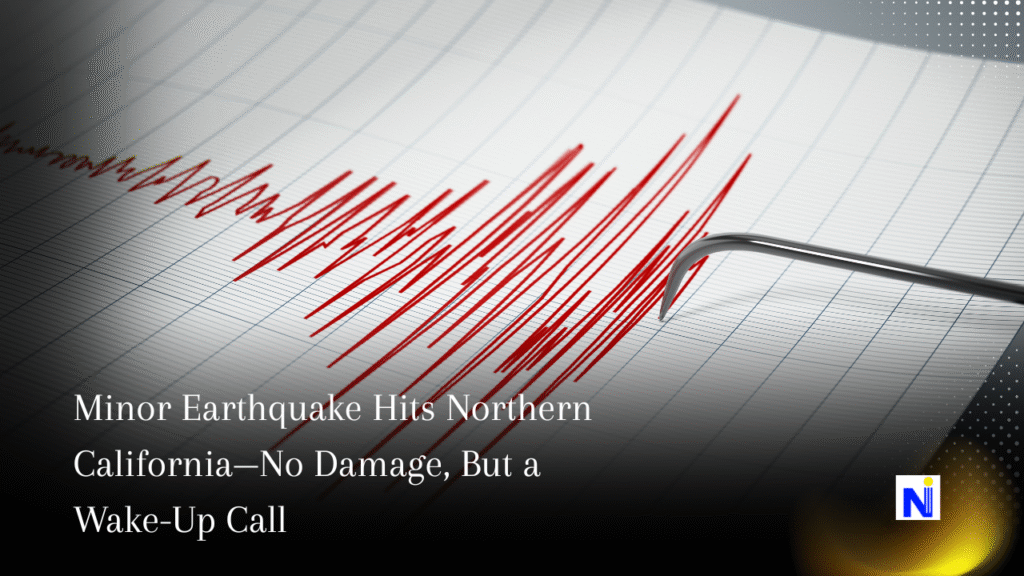
Seismic Activity in Northern California: A Recurring Threat
A mild tremor rattled parts of Northern California, reminding millions that the region remains on shaky ground. The U.S. Geological Survey (USGS) recorded a small-magnitude earthquake with a preliminary rating of [magnitude], striking at a depth of [depth] km near [exact location]. While no damage or injuries were reported, the event renewed public awareness around earthquake preparedness and highlighted the ever-present tectonic risks.
Northern California sits along the Pacific Ring of Fire, an area known for intense seismic and volcanic activity. It’s home to the infamous San Andreas Fault, making even minor tremors worthy of attention.
Earthquake Details and Seismic Analysis
Here’s what we know so far about the recent quake:
- Magnitude: [Insert magnitude]
- Epicenter: [Insert location, e.g., 12 miles northeast of Ukiah, California]
- Time: [Insert local time and date]
- Depth: [Insert km depth]
- Felt Reports: Residents from [list nearby areas] reported light to moderate shaking.
Ground Movement and Public Response
According to USGS ShakeMap data:
- Ground acceleration stayed within safe thresholds.
- Modified Mercalli Intensity (MMI): Rated II–III across most affected areas.
- No 911 calls or emergency responses were triggered.
Despite being minor, this event adds valuable data to long-term seismic monitoring.
“Even small earthquakes help us refine our risk models,” said Dr. Karen Alvarez, a geophysicist at UC Berkeley.
A Look Back: California’s Earthquake History
Northern California has seen its share of destructive seismic events. Here are some of the most notable:
| Year | Location | Magnitude | Casualties | Estimated Damage |
|---|---|---|---|---|
| 1906 | San Francisco | 7.9 | 3,000+ | Over $500 million |
| 1989 | Loma Prieta | 6.9 | 63 | Around $6 billion |
| 2014 | South Napa | 6.0 | 1 | Nearly $1 billion |
| 2022 | Humboldt County | 6.4 | 2 | Widespread structural damage |
Each event reinforces the need for constant vigilance and better public readiness.
The Science: Why California Keeps Shaking
San Andreas Fault and Plate Tectonics
The San Andreas Fault divides the Pacific and North American tectonic plates, which grind past each other at about 5 cm per year. This friction builds tension over time—eventually released through earthquakes.
Types of Seismic Events
- Microquakes: Usually below magnitude 2.0, rarely felt.
- Minor Earthquakes: Magnitude 3.0–4.0, often felt but not damaging.
- Major Quakes: Above magnitude 6.0, with potential for serious damage.
This recent tremor falls into the “minor” category but is still geologically significant.
Emergency Preparedness: Always Be Ready
After the quake, Cal OES issued a reminder about safety measures that every Californian should take seriously:
Earthquake Safety Checklist:
- 🔩 Secure heavy furniture to walls
- 📦 Keep an updated emergency kit (water, food, flashlight, etc.)
- 🧍♂️ Practice Drop, Cover, and Hold On drills regularly
- 📱 Sign up for ShakeAlert early warning alerts
“Preparedness is the single best tool for minimizing casualties,” said an official from Cal OES.
Tech That’s Saving Lives
Modern earthquake monitoring is no longer reactive—it’s proactive, thanks to real-time systems and predictive modeling:
Key Monitoring Tools:
- Seismometers: Measure ground motion and intensity
- GPS Networks: Track tectonic plate movement
- ShakeAlert: Sends alerts seconds before shaking begins
These innovations allow for rapid emergency response, giving people vital seconds to protect themselves.
How Urban Planning Supports Resilience
California’s infrastructure is increasingly designed to withstand quakes:
Structural Standards:
- 🧱 Reinforced concrete frames in new buildings
- 🔄 Base isolators in high-rise structures
- 💧 Flexible piping systems for water and gas lines
- 📡 Redundant communication systems in hospitals and emergency services
Community Planning:
- 🏫 Schools and hospitals conduct regular drills
- 🗺️ Cities enforce seismic zoning in building codes
What This Means for the Future
Though minor, this earthquake serves as a real-world stress test for emergency systems and public readiness. Experts warn that a major earthquake along the Hayward or San Andreas Fault is overdue. Each minor quake is a rehearsal for what could come next.
Key Takeaways:
- ✅ No injuries or damage from the recent quake
- 🌍 It adds valuable data to geological models
- 📢 Public agencies continue to emphasize preparedness
- 💡 Technological tools like ShakeAlert improve response time
- 🏗️ Urban resilience is a growing priority
Final Word: Stay Alert, Stay Safe..
Northern California’s latest seismic activity may not have caused damage, but it’s a timely reminder of the unpredictable power beneath our feet. With advances in monitoring, resilient design, and public education, California is better equipped than ever to face the inevitable.
Because when it comes to earthquakes, it’s not a matter of “if”—it’s “when.”






